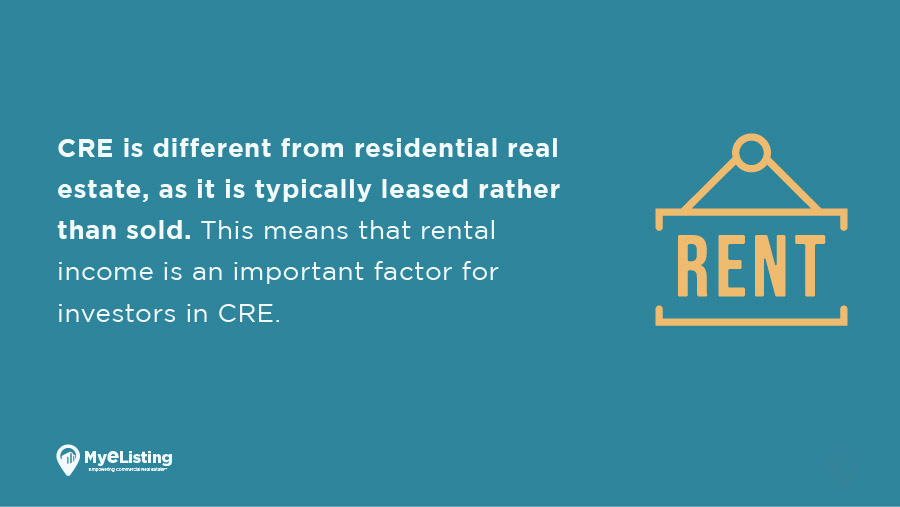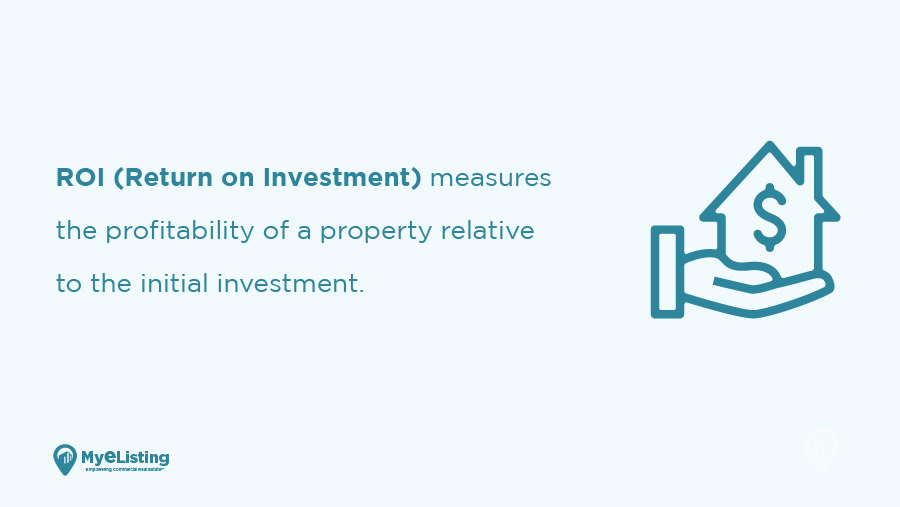13 Important Commercial Real Estate Definitions You Should Know

Specializes in providing actionable insights into the commercial real estate space for investors, brokers, lessors, and lessees. He covers quarterly market data reports, investment strategies, how-to guides, and top-down perspectives on market movements.

In the world of commercial real estate (CRE), there are a number of terms and definitions you should know. It’s important to understand these terms so you can effectively communicate with potential clients, brokers, and sellers.
It can be a lot to take in, but the world of commercial real estate can be equally as rewarding with some self-education: There are different property types, financing options, and contracts that all have their own unique terminology.
Here are some of the most common and important definitions surrounding commercial real estate.
#1 – Commercial Real Estate (CRE)

Commercial real estate (CRE) is a term used to describe real estate that is used for business purposes. This can include office buildings, retail space, warehouses, and more. CRE is different from residential real estate, as it is typically leased rather than sold. This means that rental income is an important factor for investors in CRE.
When investing in commercial real estate, you are essentially becoming a property owner. This can be a lucrative investment, as commercial real estate typically appreciates at a higher rate than residential real estate.
However, it’s important to do your research before investing in commercial real estate, as there are many factors to consider. For example, you will need to find tenants for your property and make sure they are able to pay their rent on time. You will also need to manage the property and keep up with maintenance and repairs.
#2 – Direct Investment vs. Indirect Investment
There are two main types of investment in commercial real estate: direct and indirect. Direct investment involves buying or developing property yourself, while indirect investment includes investing in real estate through vehicles like real estate investment trusts (REITs) or funds.
Direct investment in commercial real estate can be a great way to control your own property and reap the rewards of its appreciation. However, it requires a significant amount of capital and expertise, and you’ll be directly responsible for all aspects of the property’s management.
Indirect investment is generally more accessible for small investors and requires less time and effort to manage. However, you’ll have less control over the property and may not see as much upside if it appreciates in value.
#3 – Build-to-Suit
Build-to-suit is a type of commercial real estate lease in which the tenant commissions the construction of a new building, or adapts an existing one, to their own specific needs. The landlord generally provides the land and is responsible for any necessary site work, such as infrastructure improvements.
Although the tenant is usually required to pay for the construction costs, they may be able to negotiate a below-market rent during the initial lease term. Build-to-suit leases can be an attractive option for businesses that need highly specific or customized space, but they can also be more expensive and time-consuming than existing space.
#4 – Cap Rate
The capitalization rate, or "cap rate" for short, is a measure of the return on investment for a commercial real estate property. It is calculated by dividing the property’s annual net operating income by the property’s current market value.
#5 – Full-Service Rental Rate
The full-service rental rate is the monthly rate charged by a commercial real estate landlord that includes all operating expenses associated with the property. These expenses can include items such as utilities, janitorial services, and common area maintenance.
#6 – Punch List
A punch list is a list of items that need to be completed before a construction project can be considered finished. In commercial real estate, the punch list is usually prepared by the tenant and reviewed with the landlord or property manager prior to moving in.
The punch list may include items such as touch-ups to paint or drywall, repairs to flooring or fixtures, and any other outstanding work that needs to be completed.
#7 – ROI

ROI, or return on investment, is a key metric in commercial real estate. It measures the profitability of a property relative to the initial investment. A high ROI means that a property is generating a good return for the amount of money that was invested.
#8 – Triple-Net (NNN) Rental Rate
A triple-net rental rate, also known as an NNN rate, is a commercial real estate lease rate that includes base rent plus additional expenses such as property taxes, insurance, and common area maintenance (CAM) fees. The tenant is responsible for paying these additional expenses in addition to their monthly rent payment.
#9 – Second-Generation Space
A second-generation space in commercial real estate is a space that has been used for commercial purposes before but has been vacant for a period of time. These spaces are often in need of significant renovations in order to be usable again.
#10 – Shell Space
Shell space is an unfinished commercial space that does not yet have partitions or a ceiling. The term is also used to describe a completely renovated space that is ready for new tenants to move in and customize to their own needs.
#11 – Tenant Representation
Tenant representation is a type of real estate service where a professional agent or broker represents the interests of a tenant during a commercial lease negotiation. The agent or broker works to get the best possible terms for the tenant in the lease agreement. This includes things like rent price and the length of the lease.
#12 – Cash-on-Cash Return
Cash-on-cash return (CoCR) is a rate of return often used in commercial real estate. It measures the cash income generated by a property after accounting for all operating expenses, mortgage payments, and other capital costs but does not yet include taxes. The CoCR is a good metric for assessing the performance of an investment property before taxes are accounted for.
#13 – Debt-Service Coverage Ratio (DSCR)
Debt-Service Coverage Ratio (DSCR) is a financial ratio that measures a property’s ability to generate enough income to cover its mortgage debt service payments.
The higher the DSCR, the more income the property is generating relative to its debt obligations and the more likely it is to be able to make its mortgage payments on time. A low DSCR may indicate that a property is at risk of defaulting on its mortgage payments.

Commercial real estate is a great way to earn rent and increase your net worth. You just need to find the space that’s right for you, understand the ins and outs of commercial real estate, and set realistic goals.
List & Browse Commercial Real Estate for Free on MyEListing.com!
You can list and browse commercial real estate for free right here on MyEListing.com.
Simply sign up for a free account and get unlimited access to accurate local market intelligence, customized property type alerts, comp software, and more.
Article Search
Share
All Article Categories








